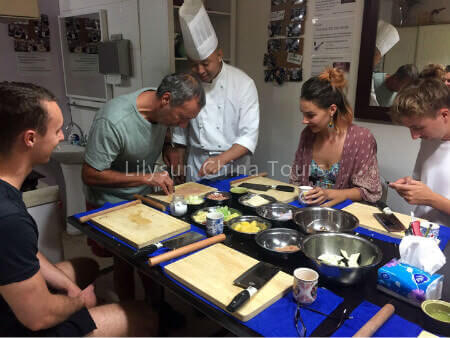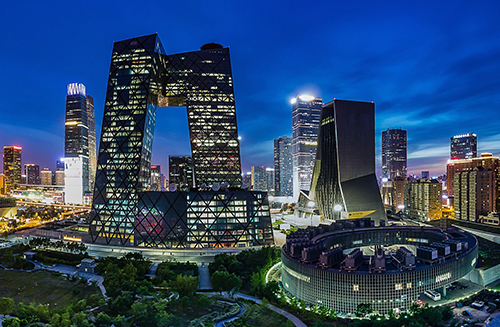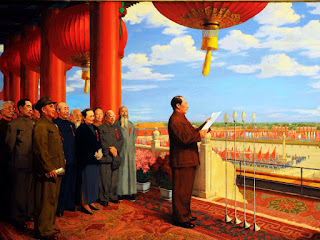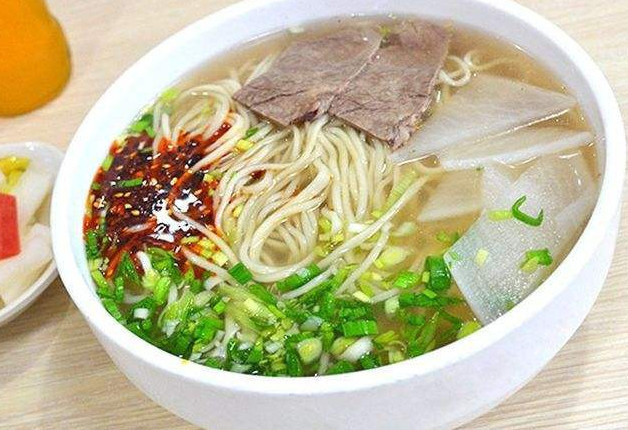11 Cool Things You Must Try in Beijing
Beijing is a city of history and modern vitality. There are so many things you can do here, but I'm offering you 11 cool experiences. Let's check them out!
- 1. Taste Beijing Roast Duck
After a long day’s traveling in Beijing, a feast of Beijing Roast Duck would be necessary. As a world-famous dish, Beijing Roast Duck has attracted millions of people every year. In ancient China, roast duck is a imperial dish. It is said that Zhu Yuanzhang - the first Emperor of Ming Dynasty loved roast duck. He could have a whole duck every day, which pushed the imperial chefs to innovate and create the new cooking skills. Later on, when Zhudi - the fourth son of Zhu Yuanzhang usurped and moved the capital city from Nanjing to Beijing, he also brought the roast duck here. Since then, Beijing Roast Duck became a famous dish.
The ducks of Beijing Roast Duck are all eatable Beijing Duck with high-quality meat. The ducks are roasted on the charcoal fire. The meat is rather red and juicy with outside crispy and inside delicate. People often say that one fails to climb the Great wall is not a hero; while one who fails to tastes Beijing Roast Duck comes Beijing for nothing. Thus, coming to Beijing, you must taste the famous Beijing Roast Duck.
 |
| Roast Duck |
Beijing Opera, also known as Ping Opera, is one of the five operas in China (Yu Opera, Yue Opera, Ping Opera and Huangmei Opera). The tune of the opera is mainly Xipi and Erhuang with Huqin, gong and drum. It is also regarded as the quintessence of Chinese culture.
Beijing Opera was originated from Hui Opera. Since the 55th year of Emperor Qianlong (1790) in Qing Dynasty, four famous opera group named San Qing, Si Xi, Chun Tai and He Chun came to Beijing one after another. They collaborated with opera artists from Hubei Province and absorbed partial plays, tunes and performing skills of Kun Opera, Qin Opera and some local folk tunes. After gradual communication and fusion, Beijing Opera came into being. It was increasing developed and performed in the imperial court for royal families. Until Republic of China, Beijing Opera was still popular.
Beijing Opera has become a crucial media for introducing and spread Chinese traditional culture. In 2010, the Beijing Opera is listed into List of Intangible Heritage of Humanity. With a combination of music, speech, dance and acrobatics, Beijing Opera is the best way to know traditional Chinese myth and legend.
 |
| Beijing Opera |
- 3. Learn to Make Traditional Chinese Handiworks
Paper-Cuts
Also known as paper sculpture, paper-cut is one of the oldest folk arts of Han people. It is a hollowness art, giving pleasure to your eyes and heart. The main material is paper, but some people may also use gold or silver foil, bark, leaves, cloth and leather. Paper-cut has a long history and was popular since ancient times. In Xinjiang Province, some paper-cut masterpieces were excavated with a history of over 1500 years. Later on, other paper-cuts are also discovered in some other places.
 |
| Paper Cut |
People use paper-cuts on certain situations to show their good wishes. For instance, people make “囍” for wedding ceremony to wish newly-weds a happy life together. When spring festival comes along, paper-cut “福” is always popular, because it means luck and fortune in the next year. In some Hutongs, you will have the chance to learn the culture of paper-cuts and how to make it.
Chinese Knots
Chinese Knot is a symbol of Chinese traditional culture, a typical weaving art. With only one thread used from beginning to the end, Chinese Knot represents the intelligence and profound culture. People make different knots to show their wishes in various conditions, like love, acquaintance, peace and reunion. The materials are usually red thread, representing the boom and prosperity. However, you can also use other materials to make it. If you are interested in learning how to make it, you can make it as presents or decorations for your houses, cars and other places.
 |
| Chinese Knot |
Facial Make-up
If you have seen the Beijing Opera, you might wonder how the facial make-up was made. In fact, you can learn how to make it right in Beijing.
As we all know, there are a variety of operas in China, all of them have facial make-up. Once you learned how to read the facial make-up, you will know the role instantly and better understand the opera. There are some classic facial make-up colors. Red face indicates the role is loyal and upright, like Guan Yu (a general) in Three Kingdoms Period. Black face shows the role is rather stern and serious such as Bao Zheng (a minister) from Song Dynasty. While white face tells the role is suspicious and treacherous, like Cao Cao (leader of Wei State) in Three Kingdoms Period. Lastly, the yellow face indicates the role is brave yet bad-tempered, such as Yuwen Chengdu (a general) from Sui Dynasty. All in all, you will be shown how to make these facial make-ups and learn for yourself.
 |
| Facial Make-up |
4. Have a Cup of Tea at Laoshe Teahouse
4. Have a Cup of Tea at Laoshe Teahouse
When you are worn out after a day’s travel in Beijing, having a cup of tea in Laoshe Teahouse would be a great choice. Built in 1988, Laoshe Teahouse is named after the people’s artist Laoshe. It covers an area of 2,600 square meters, integrating story telling rooms, restaurant and tea culture rooms. Surrounded in the antique teahouse immersed in strong Beijing flavor, you can appreciate several kinds of spectacular performances, revealing the excellent traditional culture, including Beijing Opera, ballad singing, magic, face changing, etc.. Meanwhile, you can taste various kinds of tea, refreshments originally made for imperial families and conventional Beijing snacks. Quadrangle teahouses in the front is another distinguished character in Laoshe Teahouse to advocate the Beijing culture and tea culture. With outside forming by typical Beijing architecture quadrangle courtyard, it integrates the charm of profound tea art and graceful capital city, creating a teahouse only exist in dream.
Inside the teahouse, the whole decoration is in traditional Chinese style. Th entire color is a little dark with ancient palace lanterns, rosewood tables and chairs, and antique stages. You may sip a cup of local tea, or have some snacks, or order some dishes like Beijing Roast Duck while enjoying the performance. Coming here, there is nothing but leisure and tranquility. Listening to the melodious Chinese zither and watching the exquisite tea art show, you can fully relax yourself with a cup of tea in your hand.
 |
| Laoshe Teahouse |
Acrobatics is a traditional Chinese performance, a huge challenge for acrobats’ body. Began in Western Han Dynasty (202 B. C - 9 A. D), acrobatics has a history of over 2500 years. It is said that Emperor Wu of Western Dynasty was particularly fond of watching acrobatics. He entertained his foreign diplomats with the acrobatics show in his palace. Beijing is one of the places acrobatics is originated from. In old Beijing, Tian Qiao has been a long-standing spot for acrobats to perform. After the establishment of the new China, the team always performed there began to perform overseas, representing the Chinese acrobatics culture.
After such a long development, Tianqiao acrobatics has been evolved to meet the modern aesthetic concept. Beside the traditional Lion Dance, oral stunts, pagoda of bowls, juggling and wire walking, modern acrobatics show is more diversified with the development of modern technology.
As a show requiring strength, confidence and courage, audiences are often amazed by the show and found in sweat. While after the show, performers are much admired and respected. You should really have a look by yourself.
 |
| Beijing Acrobatics |
- 6. Slide Down the Mutianyu Great Wall
With tons of people flock to the easy-to-access Badaling Great Wall, we suggest you take a visit to Mutianyu section. Even if you are not that much of a mountaineer, you can still enjoy this trip by taking cable car up and toboggan car down whilst admiring the breathtaking views this grand architecture can offer. The whole slide is about 1,580m and by toboggan it takes about 10 minutes.
 |
| Mutianyu Toboggan Route |
- 7. Have a Cup of Coffee in the Central Perk, Beijing
Anyone who loved to watch the hit sitcom Friends are familiar with the Central Perk where Rachel, Ross, Monica, Joey, Phoebe, and Chandler used to hang out a lot. The typical orange-colored couch, the glass door and the bartender Gunther. It’s a place where friends bond and their relationships are deepened. We all know that there is a Central Perk in New York, but do you know Beijing also has one? Hidden in a office building, a similar Central Perk is created by a loyal fan of Friends named Du Xin. He once told the National Public Radio that he was crazy about the Friends, and for him, it was like a religion. He provided the similar food as mentioned in the TV series and he himself even dressed like Gunther. When you come to Beijing the next time, make sure you hang out in this small Central Perk, you will be amazed.
 |
| Imitated Central Perk |
Are you curious about how the Beijing food is made? Do you want to make your own Chinese food? You’ve found the right place. We have a team that can guide you through every step of the Chinese meal making process, including the vegetable selection, seasoning discernment, sausage making, ingredients chopping and frying, and then make your own dessert. You will do all these stuff under the guidance of a 5-star hotel chef who specializes in Chinese meal. We usually have fixed menu for you to make, but if you want to try something unusual, we can make it happen as well. Our cooking class has two section per day, you just need to choose based on your own schedule and get to the Siheyuan house on time.
 |
| Cook Meal at a Private Courtyard |
- 9. Taste the Real Beijing Breakfast
Want to taste the authentic Beijing food? Let’s begin with a real Beijing Breakfast. There are so many breakfast options in Beijing, but you are about to see are 6 of the traditional Beijing food for breakfast.
1.Stewed Pig Liver Soup. It looks very much like the Spicy Soup, but there is pig liver in it. It’s strong-flavored and best accompanied with Baozi or baked wheat cake. Old Beijingers never use spoons when they eat the soup.
2.Baked Wheat Cake and Fermented Soya-bean Milk. Those two food are the standard Beijing breakfast food. However, the Fermented Soya-bean Milk is a bit sour, be prepared before you order it.
3.Miancha. It is a rather specially cooked millet porridge with sesame paste sprinkled on surface. It tastes a bit salty but tasty.
4.Sugar Oiled Cake. It’s like the oiled Cake but with sugar. You can choose plain flavored or extra sugar flavor.
5.Deep-fried Cake. The golden crispy wrapper and the sweet fillings will satisfy your taste bud greatly.
 |
| Beijing Breakfast |
The Wild Great Wall refers to the sections that haven’t been properly recovered or protected. As we all know that the Great Wall is very long and some of the sections are built in a very long time ago. Some of those sections were greatly damaged. However, if you are a mountaineer and you want to conquer the Great Wall, these wild sections are perfect for you. We suggest you choose the sections from Jiankou to Gubeikou where the ruined and original condition of the wall are best presented. After the trekking, you will immerse yourself in the rural life of China, learn about the locals and get a reward for your effort and courage on the Great Wall of China.
 |
| Hiking on Wild Great Wall |
- 11. Admire the Night View of Beijing
The night view of Beijing is very spectacular, here are ten places where you can enjoy the best night of Beijing: Bird’s Nest, Water Cube, Sanlitun, China World Shopping Mall, Solana, Shang’an Street, Central Radio and TV Tower, National Theater, Shichahai area, and Qianmen Street. If you need a guide to navigate your way around Beijing, don’t forget to contact us!
 |
| Beijing Night Views |



Comments
Post a Comment